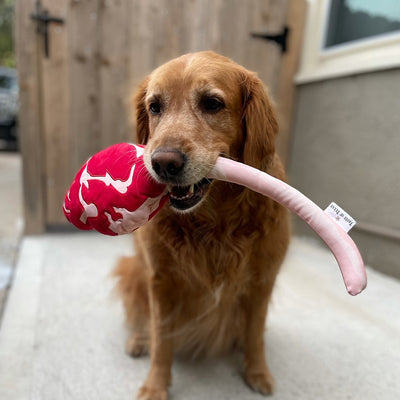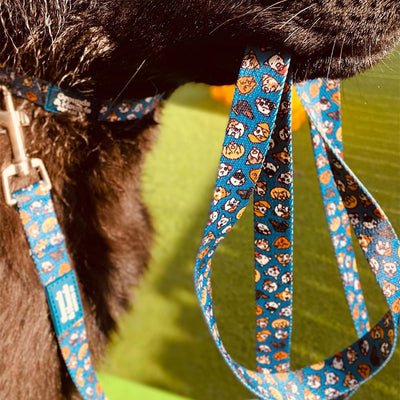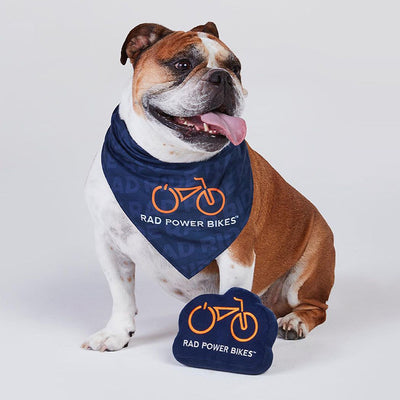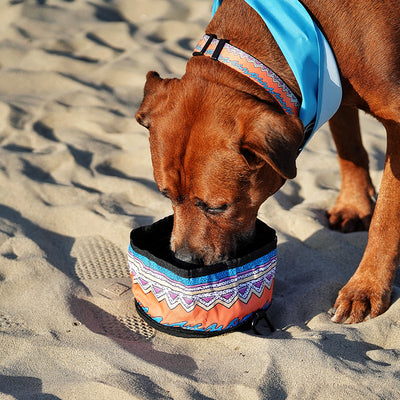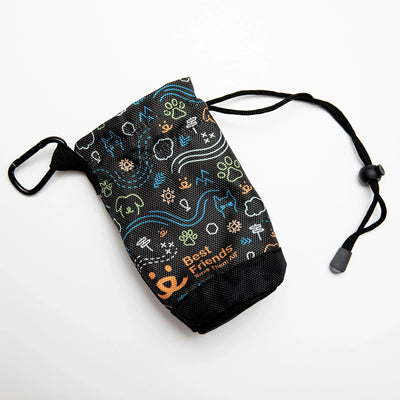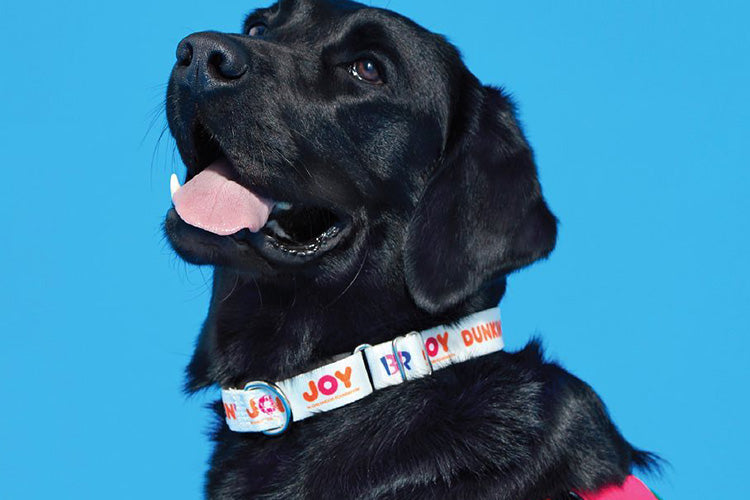Collars play a vital role in the lives of our canine companions. They provide a means of identification by holding tags displaying important information, such as a dog's name and their owner’s contact details. They also serve as attachment points for leashes, enabling an owner to control and guide their dog while walking or training. And because dogs come in many shapes and sizes, it only stands to reason that collars do too. From the basic flat corner to the full harness, a wide range of options exists for dog parents to consider.
One especially notable type of collar is the martingale collar, a specialized collar that’s especially popular for dogs in training. In this helpful guide, we at PrideBites will show you the unique qualities of martingale collars and how to apply them properly, all so that you can ensure maximum comfort and security for your pooch:
What Is a Martingale Collar?
Martingale collars are also known as no-slip, limited-slip, and greyhound collars. They were originally designed for slim-headed dogs like greyhounds and whippets, who have a tendency to slip out of regular collars by sliding their heads backwards. However, they’re useful for just about any dog who tries to escape their collar in this way, as well as for owners who want to exert a bit more control on the leash without harming their pup.
Martingale collars consist of two loops: a main collar loop that encircles the neck and an additional smaller loop, often referred to as the control loop. The control loop is strategically placed at the back of the neck and connected to the main collar loop. This unique design allows the collar to tighten slightly when the owner pulls on the attached leash, preventing the dog from slipping out while avoiding the potential choking hazard associated with traditional choke collars.
The tightening action of the martingale collar is limited by the control loop, which ensures that the main loop only closes to a set extent. This controlled tightening provides a clear signal to the dog, discouraging pulling without causing discomfort or harm. It also allows for precise correction during training sessions, as the collar releases the pressure as soon as the dog stops tugging or displaying unwanted behavior.
The Benefits of Martingale Collars
Martingale collars are useful for both walking and training, offering the following benefits:
You’ll Have Good Control When Your Dog’s On Leash
A martingale collar provides a high degree of control when walking your dog on a leash. It will tighten automatically when your dog pulls, enabling you to rein them back in without hurting them. Thanks to a feature like this one, you can direct your dog's movements more easily, making walks safer and more enjoyable for both of you.
Martingale Collars Aren’t Harmful to Dogs
Martingale collars are also considered a more humane alternative to choke chains and prong collars, both of which can exert considerable pressure on a dog’s throat when pulled. Because these types of collar close more tightly than martingales, they may cause injury or discomfort when used improperly. In contrast, a martingale collar’s design focuses on correcting misbehavior while prioritizing the comfort and safety of the dog.
Martingale Collars Are Safer Than Other Types of Collars
In addition to control and training benefits, martingale collars provide more security compared to other collar options. Traditional buckle collars can sometimes slip off or be easily removed by dogs who are skilled at escaping. Martingale collars, on the other hand, provide a secure fit, reducing the risk of your dog slipping out and getting lost or injured during walks or outdoor activities.
How to Use Your Martingale Collar Properly
To ensure that your martingale collar fits your dog comfortably and also works the way it should, it's important that you use it correctly. Follow the steps below to make sure it sits snugly around your dog’s neck:
Choose the Appropriate Size
Begin by measuring your dog's neck circumference using a flexible measuring tape. This measurement will guide you in selecting the right size collar. A properly fitted martingale collar should rest snugly on the dog's neck without digging into their throat or hampering their movement.
Adjust the Collar for the Proper Fit
Once you have the correct size collar, place the collar around your dog's neck, ensuring the control loop is positioned at the back. The main collar loop should rest comfortably lower on the neck, above the shoulders.
Next, adjust the collar's length by gently pulling the control loop until it is snug, but not overly tight. Remember to leave enough room for two fingers to fit between the collar and your dog's neck. This additional space will keep your dog comfortable and ensure their freedom of movement while still remaining secure.
Double Check the Fit before Attaching the Leash
Before attaching the leash, take a moment to double check the collar's fit. Make sure that it hasn't loosened or tightened excessively since you initially adjusted it. Verify that the collar won’t slip off, but also still allows your dog to move their head and neck comfortably. Regularly inspect the collar's condition for any signs of wear and tear, and replace it if necessary to maintain optimal performance and safety.
Now that you understand the unique qualities of martingale collars, you can make an informed choice when selecting the most suitable collar for your dog's needs. Choose a comfortable and well-fitted martingale collar to maximize the benefits of every walk and training session with your dog.

